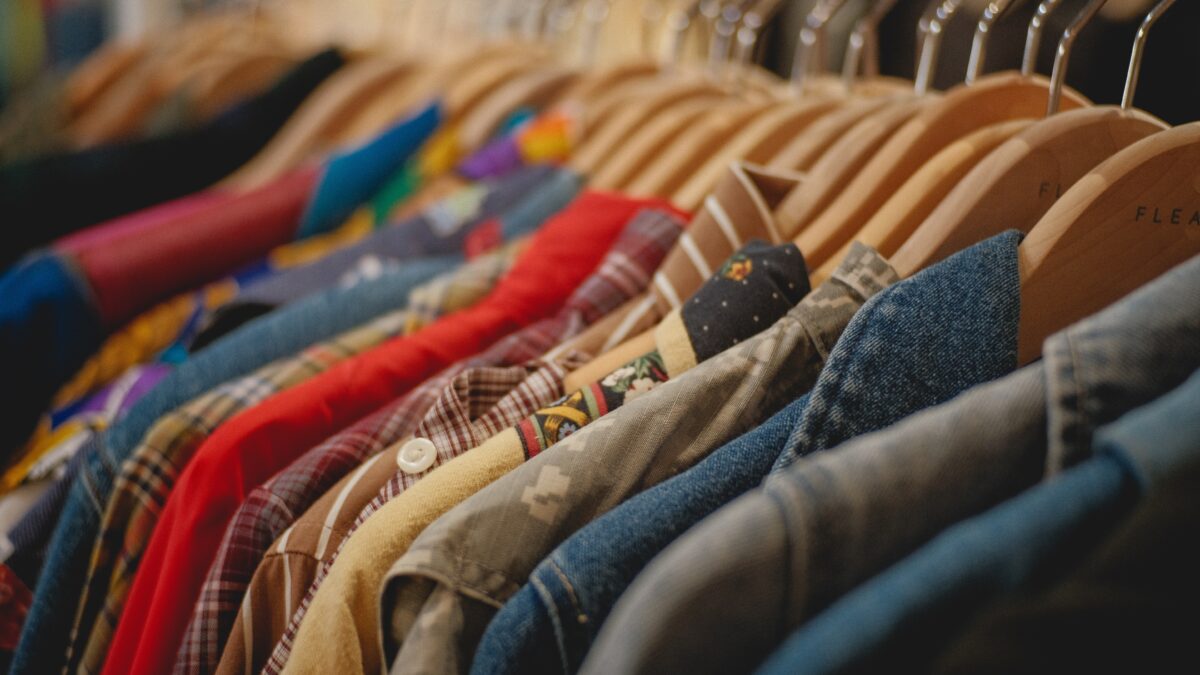One of the major trends in the fashion industry over the last decade has been the rise of thrifting. According to a ThredUp Report, the secondhand market, which consists of clothing resale platforms, donations, and thrift stores, is expected to grow from its current value at $28 billion to $64 billion by 2024. A more forward presence of this market in the fashion industry has brought forth an uptick in participation. When people see clothing donation bins on the side of the road, they donate. Unfortunately, the demand in the United States for secondhand clothes is simply not high enough to meet the supply of donations. It is important to know where these clothes go after millions complete their closet clean-outs each year.
Two million tons of clothing items are dropped off to charities annually. Many of these clothes are put on racks in places like Goodwill or Salvation Army. Even more, however, do not complete their intended path to someone else’s closet. Instead, most unsold secondhand clothes follow one of two pathways. The items that make it to the racks, but are never picked up by a new owner, stay in the United States on the first pathway. Secondhand retailers donate them to organizations, which sort through the items and determine their next several steps.
A small fraction of clothing donations go through the textile recycling process. Though not as low-impact as reusing, and difficult to do with blended fibers, textile recycling does offer a reduced environmental impact compared to incineration and landfilling, according to the Journal of Cleaner Production. PlanetAid, a clothing donation non-profit, collects and recycles over 99 million pounds of clothes and shoes each year and ensures they are sorted and processed. The fibers in these items are re-spun into thread for the production of new products.
About two-thirds of thrift store discards miss out on textile recycling and are destined for the landfill. According to the Environmental Protection Agency’s annual waste management report in 2017, a total of 11.15 million tons of textiles were placed in landfills. Compared to the 2.57 million tons that were recycled, that number is very high. In the landfills, the clothes begin to decay, releasing landfill gas composed of 50% methane and 50% carbon dioxide into the atmosphere, contributing to the greenhouse gas effect. Landfills have also been known to cause water sanitation and soil toxin issues, as waste sometimes escapes from the landfill, contaminating local groundwater. Clothing items sit in these landfills for up to 50 years, depending on the material, waiting to decompose.
The second pathway of clothing donations begins quite differently. Items that are not selected to have a hanger in a storefront are exported to developing nations. The United States alone exports 1.6 million tons of secondhand clothes each year. Regardless of the quality of the donated items, they enter the secondhand market in East African and Indian countries. Many vendors in these countries have built their livelihoods around selling the clothes, and it serves as a strong part of the developing economy. The millions of tons of donations are too much, however, for the demand in East Africa. Already, the local textile sector has disappeared. The quality of the clothes is often unfit for anyone to wear, so fields of secondhand clothes are set on fire to “remove” them. Not only does this release more greenhouse gases into the atmosphere, but it destroys land and vegetation in these countries.
However, not everything gets set ablaze. Items made from certain materials, such as wool, are repurposed. Buttons, zippers, and embellishments are cut off of the clothes and resold in street markets or to local manufacturers. The wool garments are then put into machines to produce a mulch-like material, which eventually gets spun into thread. This thread, called shoddy, is poor quality and is used to make relief blankets. Even now, however, the demand for the blankets is very low, as other countries have figured out how to manufacture them for equally cheap prices.
The solution to this issue is not to stop donating clothes. Rather, it is important for consumers to buy fewer clothing items, wear them for longer periods of time, and when they must be discarded, seek out organizations that focus on sorting through the clothing and ensuring that items that can’t be reused make it through textile recycling. Not many exist, though, since textile recycling is challenging and capacity is limited. PlanetAid and other organizations that are transparent about textile recycling such as the Council for Textile Recycling, Secondary Materials, and Recycled Textiles are great places to start. Companies like Nike, The North Face, and Patagonia also have clothing and shoe collection programs to repurpose their items. And of course, paying attention to the amount of clothing items individuals consume can go a long way. Fewer purchases mean fewer new textiles produced, which alleviates much of the secondhand clothing issue.
Sources
The Wide World of Secondhand Clothing. Planet Aid, Inc. (2018, May 4). https://www.planetaid.org/blog/The-Wide-World-of-Secondhand-Clothing.
About Planet Aid. Planet Aid, Inc. https://www.planetaid.org/about.
Porter, B. What Really Happens to Unwanted Clothes? Green America. https://greenamerica.org/unraveling-fashion-industry/what-really-happens-unwanted-clothes.
Sandin, G. & Peters, G. M. (2018). Environmental impact of textile reuse and recycling – A review. Journal of Cleaner Production, 184, 353-365.
United States Environmental Protection Agency. (2019). Advancing Sustainable Materials Management: 2017 Fact Sheet. https://www.epa.gov/sites/production/files/2019-11/documents/2017_facts_and_figures_fact_sheet_final.pdf
Basic Information about Landfill Gas. United States Environmental Protection Agency. (2020, August 6). https://www.epa.gov/lmop/basic-information-about-landfill-gas.
ThredUp. (2020). 2020 Resale Report. https://www.thredup.com/resale/static/thredup-resaleReport2020-42b42834f03ef2296d83a44f85a3e2b3.pdf Bradshaw, K. (2020, June 19). Where Do All The Clothes Go? First Book Club Meeting Tackles Textile Waste. Waste360. https://www.waste360.com/recycling/where-do-all-clothes-go-first-book-club-meeting-tackles-textile-waste.

